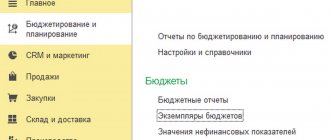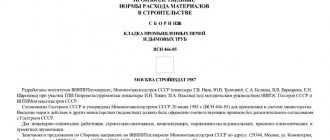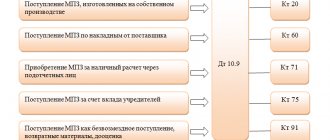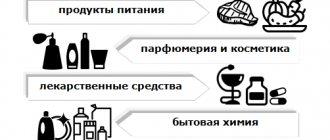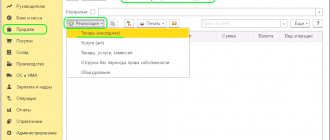The circulation of inventory items that arise in the course of the activities of any organization inevitably leads to losses, including those associated with changes in their physical characteristics. This is especially evident in retail trade—within the turnover of food products. In accordance with the standard accounting classification, it is customary to separate the reasons for their occurrence. Not in all situations, a decrease in weight, as well as the resulting shortage, are the result of dishonest actions of employees or suppliers - there is also such a concept as natural loss, which characterizes the specifics of processes associated with objective changes. Factors of this kind are relevant for both storage and transportation of inventories, must be reflected in accounting, and must be recognized for tax purposes.
General overview
Based on the provisions of Order No. 95 of the Ministry of Economic Development of the Russian Federation, which came into force in 2003, the phenomenon under consideration is the loss of goods and materials, expressed in a reduction in the mass of marketable products without loss of quality characteristics, the requirements for which are established in accordance with current standards. The definition provides that the natural loss of goods is calculated and written off through a comparison of the actual and the mass value declared in the documentation - both during storage and during transportation.
At the same time, there are a number of exceptions, that is, certain factors, the costs of which are not the basis for assigning losses to this category. Their list is also specified within the framework of the methodological recommendations of the Ministry of Economic Development and allows us to avoid incorrect identification and reflection in reporting of the root causes that cause changes in the physical characteristics of inventory.
What is meant by natural decline?
There is no definition of the concept itself in legislative acts.
Following the methodological recommendations regarding the development of standards used to calculate natural loss, such loss is permissible weight loss within established limits, while maintaining quality that meets the requirements.
The recommendations were approved by the Ministry of Economic Development of the Russian Federation (Order No. 95 of March 31, 2003).
The norms of permissible losses are established taking into account:
- irreversible processes during long-term storage of goods, comparing the initial mass upon receipt with actual indicators at certain intervals;
- risks associated with losses during transportation of products, defining the quantitative value as the difference between the quantity indicated in the accompanying documents and the goods received in fact.
What does not apply to natural loss
In accordance with the approved rules, the circumstances under consideration do not include:
- Technological costs, including manufacturing defects not identified at the preliminary control stage.
- Losses associated with violation of regulatory provisions, the application of which is mandatory within the framework of storage or transportation of material assets. In this case, we are talking about non-compliance with transportation standards, damage protection conditions, operational standards, etc.
It is also worth noting that the concept of types of natural loss does not cover losses caused by repair or preventive procedures, implementation of warehouse operations, as well as emergency situations.
What does the term “natural decline” mean?
The exact definition is given in Order of the Ministry of Economic Development of the Russian Federation No. 95 dated March 31, 2003. It says that the natural loss of goods is such losses in the mass of goods and materials that are caused by changes in the physicochemical and/or biological properties of products. At the same time, the quality of the valuables is maintained at the proper level in accordance with legal requirements. A common example of EU is shrinkage, crushing, spilling, and crumbling of raw materials. Product damage, spoilage, defects, shortages, that is, various technological and emergency costs do not apply to natural loss.
The rate of natural loss is determined as follows:
- During storage of inventory items - for the total period of storage of products by comparing the initial weight with the final one.
- During the transportation of goods and materials - for the period of delivery of products by comparing the weight sent and received by the recipient (data is indicated in the accompanying documentation for the cargo).
The following are not recognized as natural loss:
- Losses of goods and materials from defects.
- Technological losses.
- Loss of products during storage and/or transportation due to violations of standards and conditions of storage, delivery, damage to the container, operating rules, etc.
- Emergency losses.
- Losses due to repairs.
Types of natural loss:
- Shrinkage is the evaporation of moisture from products without sealed containers. The most common type of EU is typical for food products.
- Shattering or spraying - this type of loss occurs in bulk fine-grained goods during storage, delivery, packaging and sale.
- Bottling – quantitative mass losses occur during the sale and pumping of liquid products.
- Break - EU is standardized only for products in glass containers, as well as for mirrors and various tableware products.
- Leakage – weight loss occurs when containers leak. Another type of this EU is the absorption of liquid products into packaging.
- Crumb - such EU is formed during cutting (cutting) of products. Residues allowed for further processing are excluded.
- Packaging – weight loss occurs even at the pre-sale stage during the packaging process of products.
Ready-made solutions for all areas
Stores
Mobility, accuracy and speed of counting goods on the sales floor and in the warehouse will allow you not to lose days of sales during inventory and when receiving goods.
To learn more
Warehouses
Speed up your warehouse employees' work with mobile automation. Eliminate errors in receiving, shipping, inventory and movement of goods forever.
To learn more
Marking
Mandatory labeling of goods is an opportunity for each organization to 100% exclude the acceptance of counterfeit goods into its warehouse and track the supply chain from the manufacturer.
To learn more
E-commerce
Speed, accuracy of acceptance and shipment of goods in the warehouse is the cornerstone in the E-commerce business. Start using modern, more efficient mobile tools.
To learn more
Institutions
Increase the accuracy of accounting for the organization’s property, the level of control over the safety and movement of each item. Mobile accounting will reduce the likelihood of theft and natural losses.
To learn more
Production
Increase the efficiency of your manufacturing enterprise by introducing mobile automation for inventory accounting.
To learn more
RFID
The first ready-made solution in Russia for tracking goods using RFID tags at each stage of the supply chain.
To learn more
EGAIS
Eliminate errors in comparing and reading excise duty stamps for alcoholic beverages using mobile accounting tools.
To learn more
Certification for partners
Obtaining certified Cleverence partner status will allow your company to reach a new level of problem solving at your clients’ enterprises.
To learn more
Inventory
Use modern mobile tools to carry out product inventory. Increase the speed and accuracy of your business process.
To learn more
Mobile automation
Use modern mobile tools to account for goods and fixed assets in your enterprise. Completely abandon accounting “on paper”.
Learn more Show all automation solutions
General principles of write-off
Loss of goods may occur during storage, transportation, or during the sales process. They are divided into:
- normalized, within the limits of loss;
- non-standardized, above-normative nature.
How to write off the amounts of shortages and losses from spoilage within the limits of natural loss ?
Standardized losses are also called quantitative or natural losses. Exceeding norms are called activated, in other words, when writing them off, you need a write-off act, a reasoned conclusion of the commission, approved by the head of the organization.
Natural losses are written off based on the norms of natural loss approved by the legislator, calculated for each type of product. Many of these documents were approved back in Soviet times and are still relevant today. A decrease in the marketable mass occurs due to a change in their initial properties (shrinkage, shrinkage, evaporation, spillage, etc.).
How to write off materials, goods and other supplies in the event of their damage or shortage when applying FSBU 5/2019?
Losses in excess of loss norms are generally considered to be a consequence of the negligent attitude of financially responsible persons to their duties and poor accounting of goods.
They are divided into:
- losses from damage, defects;
- losses due to shortages, theft, embezzlement.
Most often they are attributed to the perpetrators.
There are situations when it is impossible to claim losses against a specific person:
- losses from natural disasters;
- losses from shortages and thefts when the culprit is not determined by the court.
Losses calculated according to the standards are written off as expenses within the framework of these standards. Unstandardized losses or losses in excess of norms are written off at the expense of the guilty parties or at the expense of the organization’s profit.
Identification of commodity losses occurs, as a rule, as a result of an inventory. The inventory commission, analyzing the detected discrepancies between the actual commodity weight and the data reflected in the accounting, makes proposals for their elimination. The commission's decision is formalized in a protocol, which initially identifies the possible culprits of product losses.
Current factors
Returning to the consideration of circumstances and processes that can cause a decrease in the quantitative indicator of inventory items, we can group the most common of them into a separate table.
| Cause | Explanation |
| Shrinkage, loss of moisture | Does not apply to goods in sealed packaging |
| Rubbing, spraying | Relevant when inspecting bulk products with fine fractions |
| Crumbling | Taken into account both when chopping frozen meat or fish, and for confectionery products covered with sprinkles |
| Melting, leaking | Saturation of the container with the characteristic released liquid, as well as loss of cell sap during the defrosting process |
| Spill | Costs associated with moving liquids between containers, as well as when trading by the glass |
| The battle | Calculated for glass containers |
Reasons influencing natural losses
The amount of inventory items may decrease under the influence of various factors.
Let's highlight the most common ones:
| No. | Type of physico-chemical, biological process | Note |
| 1 | Shrinkage, moisture evaporation, volatilization of substances | The standards do not apply to hermetically sealed products. |
| 2 | Shattering or Spraying | Taken into account when taking inventory of bulk fine-grained goods. |
| 3 | crumble | Touches sugar-dusted caramel. May occur when cutting frozen meat or fish. |
| 4 | Leakage, melting, seepage | Absorption into containers, typical for fats, halva and other goods or when packaging containers leak. When the cell juice of frozen meat and fish is lost when the product is defrosted. |
| 5 | Spill | Typical losses when pumping liquids or selling goods for bottling. |
| 6 | The battle | Standardized for products packaged in glass containers, mirrors, and various tableware products. |
Standard indicators
Both in tax and accounting there is a definition of the rate of natural loss of food and non-food products - these are losses, the causes of which are determined by objective factors. The calculation procedure in this case is established by relevant government regulations, and is subject to periodic review, at intervals of no more than five years.
The responsible ministry is determined based on the specifics of a particular category of goods and materials. Thus, assessing the relevance of criteria for medical products falls under the authority of the Ministry of Health, while livestock and farm products are regulated by the Ministry of Agriculture. It is important to consider that outdated indicators remain relevant until the new requirements officially enter into legal force.
Standards for transportation
The regulatory documents defining how to calculate the natural loss arising during the transportation of food products are the following provisions, jointly approved by the Ministries of Transport and Agriculture of the Russian Federation, as well as the State Supply Committee of the USSR:
| Number and date | Products | Transport |
| №2/№2 dated January 14, 2008 | Melons and vegetables, potatoes | Auto, railway, water |
| No. 139/No. 426 dated November 21, 2006 | Sugar products | Railway, road, sea |
| №138/№425, 21.11.2006 | Meat and meat products (frozen and chilled) | Refs, road, railway, air and water |
| No. 137/No. 424 dated November 21, 2006 | Poultry and rabbit meat | Abstract |
| No. 139/No. 405 dated August 20, 2008 | Alcohol (ethyl) | Any |
| №24, 07.04.1989 | Alcohol-containing juices and fruit drinks | Railway (in barrel containers) |
| No. 99 dated December 26, 1988 | Salt | River |
| №82, 21.10.1988 | Berries, fruits | Air |
| №153, 18.12.1987 | Wine materials, wines, cognacs (including alcohols) | Railway, water, auto |
| No. 152 dated December 18, 1987 | Cereals | Specialized cars |
| №165, 05.12.1986 | Vegetable oil | Railway |
| No. 63 dated June 02, 1986 | Grain mixtures, mixed feed, bread | Automotive |
| №38, 25.03.1986 | Essences, molasses and vinegar | River |
Standard values during storage
A similar register of regulatory decrees can be cited for situations where products are involved in transportation, but their quantity changes under the influence of objective factors. It is logical that in this case the Ministry of Transport Industry is no longer involved in assessing limits and developing standards. Let's consider the main regulations of the Ministry of Agriculture:
| Number and date | Goods |
| No. 3, January 14, 2009 | Seeds and grains |
| №273, 26.06.2008/ №463, 12.12.2006 | Ethanol |
| №395, 16.08.2007 | Meat and meat products, including semi-finished products |
| No. 266-270, August 28, 2006 | Butter; curd products and cheeses; root crops and vegetables; rabbit and poultry meat; products of the sugar industry, including raw materials. |
It is worth emphasizing that the write-off of losses within the normal limits of natural loss when storing goods and materials - both in the production of semi-finished products and ready-made dishes, and in their trade, including catering establishments, must be carried out in strict accordance with the recommendations approved by the Ministry of Industry and Trade of the Russian Federation. As part of Order No. 252, issued by the department in 2013, a list of relevant indicators relevant for these market entities was determined.
Value added tax (VAT)
It should be noted that, until 01/01/2015, according to the Ministry of Finance of Russia, in accordance with clause 7 of Art.
171 of the Tax Code of the Russian Federation, in the event of shortages during the storage (transportation) of goods, the organization has the right to deduct “input” VAT from the cost of the lost goods only in that part that accounts for losses within the limits of natural loss established by law (see, for example, Letters Ministry of Finance of Russia dated 08/09/2012 N 03-07-08/244, dated 01/11/2008 N 03-07-11/02, dated 08/15/2006 N 03-03-04/1/628). From 01/01/2015, clause 7 of art. 171 of the Tax Code of the Russian Federation has lost its force.
In this regard, from 01/01/2105, the organization has the right to deduct “input” VAT on the entire cost of the lost goods.
Calculation procedure
The basis for determining the amount of losses is the inventory data that showed the shortage. To calculate stored or transported inventories, various measurement techniques are used to obtain an objective result corresponding to product units. The act is drawn up in accordance with the regulations, while the standard form 0504092 is used to draw up a statement of discrepancies.
In situations where an audit is carried out in relation to food products, offsets are made - covering the shortage with surpluses caused by misgrading. If after this procedure a negative balance remains, accounting and write-off according to the norms of natural loss are applied only to those products whose volume has actually decreased.
Calculation of losses during storage
When storing food products, losses occur in their quantity and quality.
Quantity losses are caused by the natural properties of products and are inevitable losses (they cannot be completely excluded). Therefore, standards are established for them and these losses are called natural or standardized. Such losses include natural loss and pre-sales losses.
Natural loss is a decrease in the mass of goods that occurs under normal conditions of storage, transportation and sale of goods from natural causes.
The reasons for natural loss are:
· Shrinkage - occurs due to the evaporation of moisture and volatilization of substances. This type of loss is characteristic of most food products, except hermetically packaged ones. Appropriate packaging materials and optimal storage conditions reduce shrinkage.
· Crushing and spraying - loss of bulk goods (flour, cereals, granulated sugar, starch, etc.). Pre-packaging bulk goods helps reduce these losses.
· Crumbling - occurs when chopping and cutting meat, fish, and cheeses. Natural loss does not include crumbs of baked goods, refined sugar, sprinkled caramel, because it must be submitted for industrial processing. Crushing depends on the quality of the product and is reduced with proper, skillful preparation of the product for sale.
· Leakage, absorption into containers is the seepage of liquid products through the container, loss of cellular juice of meat, fish during defrosting, release of fat from halva, balyk products, etc. The use of polyethylene liners when packaging goods reduces their absorption into containers.
· Bottling is the loss of liquid products when pouring them from one container to another (for example, vegetable oil, sour cream, etc.).
· Respiration - breakdown of nutrients, i.e. loss of dry matter of goods (fresh fruits and vegetables, flour, cereals, eggs).
For most products, norms for the natural loss of food weight have been established. The size of the norms depends on the group and type of goods, their shelf life, the climatic zone of the location of the trading enterprise, the group of stores, the time of year (for fresh vegetables and fruits), etc. Norms of natural loss do not apply to piece and packaged goods.
The norms for natural loss include the mass of polymer film, foil and parchment of cheeses, as well as the ends of casings, twine and metal clips on sausage cheese.
Normative waste generated during the preparation for sale of sausages, smoked meats, fish sold after preliminary cutting, stripping of butter, crumbs from sprinkled caramel and refined sugar are not included in the norms of natural loss; losses resulting from spoilage of products, damage and curtains of containers, waste of fruits and vegetables.
Write-off of natural loss according to established actual standards is carried out only if a shortage of goods is detected during their inventory.
The calculation of natural loss for products sold in a retail chain is as follows:
To the amount of natural loss for the actual balances of goods (at the beginning of the reporting period), the amount of the calculated loss according to documents for products received during this period is added, and the loss for unsold products (balance of goods at the end of the reporting period), as well as the loss for products sold to others is excluded organizations, handed over for processing, returned to suppliers and written off according to reports.
Pre-sale losses (or waste) are generated in preparation for the sale of goods. For example, stripping the top yellowed layer of butter, removing skin, bones from smoked meats, heads, fins from fish, etc. They are not included in the norms of natural loss, but the size of these losses is additionally determined by orders of government bodies.
Pre-realization losses can be liquid or illiquid.
Liquid losses are losses caused by a decrease in the quality of products, but such products can be eaten (scrap cookies, pasta, non-standard vegetables). They can be sold at reduced prices or recycled.
Unliquidated losses arise when removing inedible parts of the product or packaging materials (twine, paper clips, ends of sausage casings, leather, sturgeon bugs, crumbs when cutting cheeses, etc.). They cannot be sold; they are collected and destroyed.
Non-standardized losses (spoilage) are formed due to damage, scrap, damage to containers, and damage to goods. These are activated losses resulting from careless handling of goods, violation of the rules of storage, transportation, sale (for example, vegetables damaged by rodents, crushed). The cost of substandard goods is recovered from the persons who caused the damage.
Self-test questions:
1. What losses of goods are considered normalized?
2. What is natural loss of goods?
3. Name the reasons for natural loss.
4. What determines the size of the norms of natural loss?
5. For which products do natural loss rates not apply?
6. What losses are not included in the norms of natural loss?
7. In what cases is natural loss calculated?
8. How is natural loss calculated?
9. What losses, besides natural loss, are normalized?
10. What is liquid and non-liquid waste?
Literature:
Kolesnik A.A., Elizarova L.G. Theoretical foundations of merchandising of food products: Proc. for universities. 3rd ed., revised. and additional – M.: Economics, 1990.- 287 p.
Zhuravleva M.N. Theoretical foundations of commodity research of food products and standardization: Textbook. for universities. - M.: Economics, 1984. - 208 p.
Dramsheva S.T. Theoretical foundations of merchandising of food products: Proc. for technical schools. - M.: Economics, 1996. - 143 p.
Raikova E.Yu., Dodonkin Yu.V. Theory of merchandising: Textbook. allowance. – M.: Publishing House; Mastery, 2002. – 240 p.
Zhiryaeva E.V. Commodity research. 2nd edition. – St. Petersburg: Peter, 2002.- 416 p.
Norms of natural loss of food products. Instructions for use. – M.: Os – 89, 1999. – 100 p.
An example of calculating the rate of natural loss for losses
Let’s assume that at the time of the scheduled inventory, meat products had already been in the freezer for seven days.
Such circumstances determine the relevance of using Appendix No. 32, which contains a table of indicators for storage standards adjusted for the specifics of the climatic zone. It determines that the content of such food products for three days is the basis for applying a coefficient of 0.08%, after which 0.01% is added to the base value for each day.
In this way, the calculation procedure is established - the write-off of the rate of natural loss of goods in warehouses is carried out in the following form:
0.08% + ((7-3) x 0.01%) = 0.12%.
It is important to take into account that, in addition to the main content, the regulatory annexes also contain special notes that affect the mechanics of determining indicators. So, in the case of conventional meat, such factors may include storage methods, the presence of polymer film, etc.
How to calculate natural loss
In order for the write-off of natural loss to be carried out correctly, it is necessary to first find out the rationing indicators. Such standards are established for annual periods - for autumn-winter (from 01.10 to 31.03) and spring-summer (from 01.04 to 30.09); by type of equipment for delivery and storage; by type of goods. Typically, indicators are reviewed once every 5 years.
The department corresponding to the industry sector is appointed as the control body for the development of standards (Government Decree No. 814 of November 12, 2002). For example, for medicines it is the Ministry of Health. The natural loss of petroleum products is calculated according to the standards approved by the State Supply Committee (Decree No. 40 of March 26, 1986), and the natural loss of grain during storage is calculated according to the standards adopted by the Ministry of Agriculture of the Russian Federation (Order No. 3 of January 14, 2009). How to calculate natural loss?
Formula for calculating natural loss
The EU value is determined in the following order - the natural loss formula:
- Loss = T x N / 100, where: T is the accounting value of the cost or weight of the nomenclature product,
- N – EU standard for this type of product.
Accounting
Determining shortages associated with irreversible processes requires a preliminary re-grading of inventory items. The basis for classifying the amount of losses as production costs (entry D20/K94) is the corresponding order signed by the head of the organization. In this case, losses in excess of the norms of natural loss can be compensated at the expense of responsible employees (D91, 73/K94), in accordance with the legally defined procedural regulations.
In situations where it is not possible to determine the circle of perpetrators, excess costs are classified as non-operating expenses.
Accounting for natural loss rates and write-off procedures
Accounting for losses is carried out using account 94 based on data from inventory records.
| the name of the operation | Account debit | Account credit |
| The amount of the shortfall has been determined | 94 | 41 |
| Write-off of shortages within NEU | 44 | 94 |
| Write-off of shortages in excess of loss norms | 91/2 | 94 |
| Restoration of VAT on excess write-off | 94 | 68 |
Retailers that keep records of sales prices include a trade margin in the price. When writing off the arrears, the amount of the trade margin is also withdrawn.
The procedure for writing off inventory items depends on the accounting method adopted by the enterprise. Inventory and materials are written off at the price of the first acquisitions, average cost, unit cost. Write-off of goods is carried out on the basis of an act.
For excess losses, write-off is carried out at the expense of the guilty parties. The employee or group of people must admit their own guilt and agree with the shortfall. In case of established losses, employees submit explanatory notes. Persons are liable within the limits of average earnings by order of the employer or in full by a court decision.
Accounting for shortages within standard values
The content of the Methodological Instructions for Accounting for Inventory and Materials, more precisely, paragraphs 58 and 59, determines the procedure for recording shortages and damage detected during the acceptance of materials. In accordance with generally accepted practice, these amounts are determined as the product of the quantity or volume of missing or damaged products and the delivery price. Other costs, including logistics costs and value added tax, are not taken into account.
For write-off, the account credit is used in correspondence with debit 94. In parallel with this, the products are written off and belong to the category of transportation and procurement expenses, or to cost deviations (account 16). It is worth noting that not only the amount within the limits of natural loss norms can be taken for deduction - this procedure was determined within the framework of Letter No. 03-07-11/02, published by the Ministry of Finance of the Russian Federation in 2008, but was later revised.
Accounting for shortages in excess of natural loss norms
Shortages and damage to materials in excess of natural loss norms are accounted for at actual cost, which includes (clause 58 of the Guidelines for accounting of inventories):
- the cost of missing and damaged materials excluding VAT, for excisable goods - including excise taxes;
- the amount of TZR payable by the buyer, in the share related to missing and damaged materials;
- the amount of VAT relating to the cost of materials and transport costs associated with their acquisition.
Excessive losses must be recovered from the guilty parties, including by filing claims against carriers or applying the provisions of labor legislation on compensation for damage by financially responsible persons.
When this is not possible - for example, if the culprit is not identified or if the organization decides to forgive the culprit - excess losses are written off as a decrease in the financial result in accounting (as part of other expenses, to account 91 “Other income and expenses”) and are not accepted into reduction of the tax base for income tax.
In the event of a claim being made to the carrier, the actual cost of shortages and damage in excess of the norms of natural loss is taken into account in the debit of account 76 “Settlements with various debtors and creditors”, subaccount 76-2 “Settlements for claims”, and is written off from the credit of the settlement account.
Example.
The organization purchased 2000 kg of frozen meat in carcasses at a price of 275 rubles. per kg (including VAT - 25 rubles). Upon acceptance, a shortage of 20 kg was detected. The distance covered by the carrier is 200 km. The organization writes off deviations within the limits of natural loss to account 20 in the month of purchase of raw materials. In respect of shortages exceeding the norms of natural loss, she submits a claim to the carrier.
In accordance with Appendix 3 to Order of the Ministry of Agriculture of Russia N 425, Ministry of Transport of Russia N 138 dated November 21, 2006, the rate of natural loss when transporting frozen meat in carcasses by road over a distance of 200 km is 0.25%. Thus, the rate of natural loss of meat during transportation is 5 kg, which corresponds to 1375 rubles. (including VAT - 125 rubles). Excessive shortage of meat (15 kg) in the amount of 4125 rubles. (including VAT - 375 rubles) is presented to the carrier.
| Contents of operation | Debit | Credit | Sum |
| Meat accepted for registration in actual quantity (1980 kg x 250 rub.) | 10 | 60 | 495 000 |
| The amount of VAT presented by the supplier is reflected (1980 kg x 25 rub.) | 19 | 60 | 49 500 |
| VAT is accepted for deduction | 68-VAT | 19 | 49 500 |
| The shortage of meat is reflected within the limits of natural loss | 94 | 60 | 1250 |
| The amount of VAT is reflected in the part that falls on losses within the limits of natural loss | 19 | 60 | 125 |
| VAT is accepted for deduction | 68-VAT | 19 | 125 |
| The shortage within the limits of natural loss norms is written off to production | 20 | 94 | 1250 |
| A claim was made to the carrier for the amount of missing goods | 76-2 | 60 | 4125 |
Ready-made solutions for all areas
Stores
Mobility, accuracy and speed of counting goods on the sales floor and in the warehouse will allow you not to lose days of sales during inventory and when receiving goods.
To learn more
Warehouses
Speed up your warehouse employees' work with mobile automation. Eliminate errors in receiving, shipping, inventory and movement of goods forever.
To learn more
Marking
Mandatory labeling of goods is an opportunity for each organization to 100% exclude the acceptance of counterfeit goods into its warehouse and track the supply chain from the manufacturer.
To learn more
E-commerce
Speed, accuracy of acceptance and shipment of goods in the warehouse is the cornerstone in the E-commerce business. Start using modern, more efficient mobile tools.
To learn more
Institutions
Increase the accuracy of accounting for the organization’s property, the level of control over the safety and movement of each item. Mobile accounting will reduce the likelihood of theft and natural losses.
To learn more
Production
Increase the efficiency of your manufacturing enterprise by introducing mobile automation for inventory accounting.
To learn more
RFID
The first ready-made solution in Russia for tracking goods using RFID tags at each stage of the supply chain.
To learn more
EGAIS
Eliminate errors in comparing and reading excise duty stamps for alcoholic beverages using mobile accounting tools.
To learn more
Certification for partners
Obtaining certified Cleverence partner status will allow your company to reach a new level of problem solving at your clients’ enterprises.
To learn more
Inventory
Use modern mobile tools to carry out product inventory. Increase the speed and accuracy of your business process.
To learn more
Mobile automation
Use modern mobile tools to account for goods and fixed assets in your enterprise. Completely abandon accounting “on paper”.
Learn more Show all automation solutions
Accounting in excess of the standard indicator
In cases where the quantity exceeds a certain value, the actual cost is applied, which includes:
- Cost excluding VAT, but with excise tax (if any).
- Logistics and procurement costs (in fractional terms).
- Cost tax taken into account when purchasing products.
In such situations, penalties are applied against the guilty parties, including through the presentation of official claims to logistics services, as well as through the implementation of the norms provided for by labor legislation.
Write-off in the absence of losses
The legislator excludes such an option and, even more than that, leaves the possibility of considering these actions as illegal activities, the purpose of which is to deliberately reduce the tax base. To avoid problems with regulatory agencies, and eliminate the possibility of claims against the organization, it is recommended to strictly adhere to the basic regulations, applying the methodology only in the presence of actual losses.
Where and how is natural decline displayed?
Situations related to identifying shortages of goods and materials are a common occurrence. Similar circumstances arise both when accepting supplies from third-party contractors and during inventory activities, especially of an unscheduled nature. Proper documentation is an important factor for reflecting expenses in accounting. Thus, in the process of accepting the ordered batch of goods, the actual quantity (if there are discrepancies with the declared value) is recorded in writing by the responsible person. Inconsistency between quantitative indicators requires the drawing up of a separate act.
Federal Law No. 402, which regulates accounting issues, defines inventory as a tool that allows you to control the availability of inventory items listed on the organization’s balance sheet. Deviations identified during the audit process are subject to registration in the current reporting period. Posting D93 reflects the actual cost of missing or damaged products, as well as the amount of losses.
If the responsible ministry has established standards that determine that a natural loss of goods and products is possible in this category, such examples are used to calculate costs that will be expensed.
Accounting for natural loss
The procedure for writing off natural loss involves reflecting transactions on the working accounts of the enterprise. In accounting, data is generated based on the results of inventory on the account. 94:
- D 94 K 41 (43, 10) – a shortage of products was identified.
- D 44 (25, 20) K 94 – written off within the limits of EU standards.
- D 91.2 K 94 – expenses in excess of the NEU are written off as expenses.
In tax accounting, such expenses are considered material (subclause 2, clause 7, article 254 of the Tax Code).
Moreover, such costs are considered justified if they are included in profit costs within the limits approved by legislative documents. You can find more complete information on the topic in ConsultantPlus. Free trial access to the system for 2 days.

